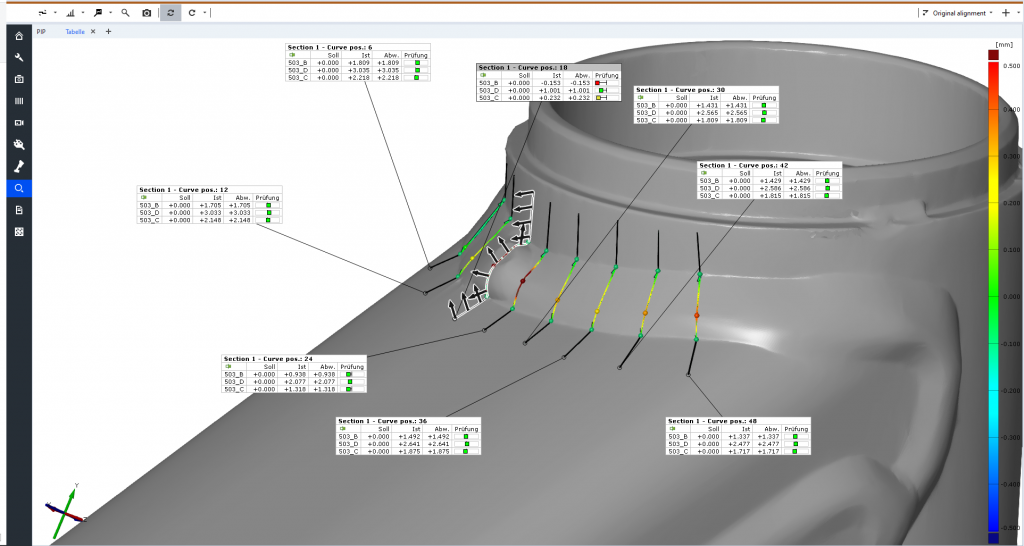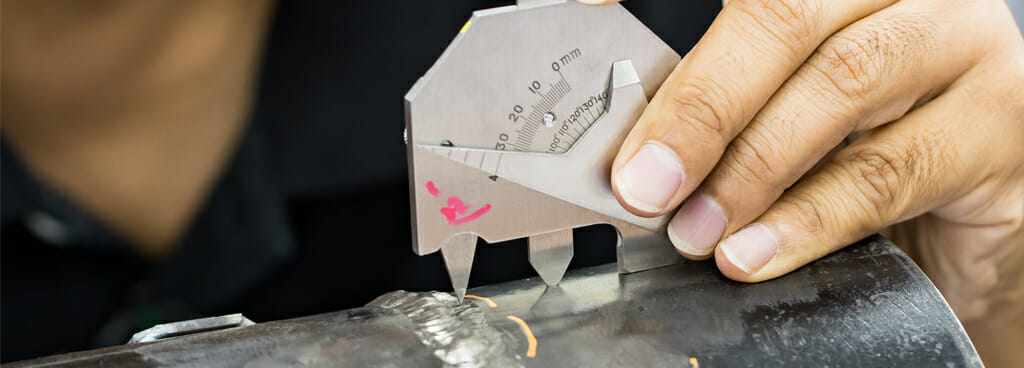Qualified Houston Welding Inspection Professionals for High-Quality Assessments
The Essential Function of Welding Inspection: Comprehending the Treatments, Tools, and Criteria That Govern High Quality Assessment in Welding Operations
Welding examination is an essential component of top quality guarantee in welding operations, making sure the structural integrity and security of bonded settings up. By employing a series of treatments, from pre-weld assessments to sophisticated non-destructive screening strategies, inspectors systematically evaluate weld top quality against strict industry requirements. The devices used in these procedures is essential for identifying possible defects that might endanger efficiency. Comprehending the interplay in between assessment approaches and governing conformity elevates vital concerns regarding the challenges faced in keeping these vital procedures. What effects do these aspects carry the general efficacy of welding procedures?
Significance of Welding Assessment
Welding assessment is essential in ensuring the stability and safety and security of welded structures, as it often functions as the final checkpoint prior to parts are taken into solution. The relevance of this examination depends on its ability to determine possible flaws that might compromise the performance and durability of bonded joints. Given the high risks included, especially in sectors such as construction, aerospace, and vehicle, thorough inspection processes are crucial.
Welding problems can occur from different aspects, consisting of improper methods, insufficient devices, or inappropriate materials. Failing to discover these concerns can bring about tragic effects, including structural failings, which might result in injury, death, and considerable monetary obligations. Welding examination provides an organized technique to examine the high quality of welds, making certain compliance with industry criteria and regulative demands.
Additionally, effective welding assessment contributes to enhancing general productivity by minimizing rework and guaranteeing that tasks remain on time. By fostering a society of top quality guarantee, companies can also improve their online reputation and client count on. In essence, the value of welding inspection can not be overemphasized, as it plays a pivotal function in safeguarding both human lives and financial investments in framework.
Secret Examination Treatments
An extensive approach to evaluation treatments is essential for making certain the top quality and dependability of bonded joints. Effective inspection starts with pre-weld analyses, which include evaluating welding requirements, product residential or commercial properties, and joint layouts to identify potential difficulties. This preparation stage establishes a standard for quality expectations.
Throughout the welding process, in-process evaluations are essential. Inspectors check parameters such as warm input, travel speed, and electrode angle to make certain conformity with established requirements. Visual examinations are the first line of defense, making it possible for the recognition of surface area issues, such as splits, porosity, or insufficient fusion.
Post-weld inspections involve more innovative strategies to assess the integrity of the joint. This might consist of non-destructive testing (NDT) techniques such as ultrasonic screening, radiographic screening, or magnetic particle testing. These methods supply much deeper understandings into the interior framework of the weld, exposing potential defects that may not show up externally.
Documentation plays an integral role throughout the evaluation procedure. Comprehensive records of inspections, consisting of searchings for and corrective actions, guarantee traceability and accountability, ultimately contributing to constant renovation in welding techniques and general top quality guarantee.
Essential Tools for Examination
Efficient assessment counts on making use of specific devices created to evaluate the high quality and stability of bonded joints. Secret tools in this process consist of aesthetic evaluation tools, such as multiplying borescopes and glasses, which enable examiners to determine surface area problems and visit here irregularities. In addition, ultrasonic screening (UT) tools plays a critical function by using high-frequency audio waves to spot interior defects within welds, making certain that concealed weak points are identified prior to they bring about failing.
Radiographic testing (RT) is an additional important method, utilizing X-rays or gamma rays to produce photos of the welds, exposing interior defects that may not be noticeable through various other assessment methods - Houston Welding Inspection. Magnetic bit screening (MT) is used for ferromagnetic materials, allowing examiners to locate surface and near-surface defects by applying great bits and magnetic areas
Dye penetrant testing (PT) is likewise significant, entailing the application of a fluorescent dye to reveal surface cracks and discontinuities. Each of these tools and methods contributes to a thorough assessment approach, ensuring that bonded structures fulfill the needed quality standards and remain safe for usage in their particular applications.

Market Criteria and Rules
Quality guarantee in welding inspection is dramatically affected by industry requirements and regulations that regulate practices and ensure security. These standards serve as criteria for top quality, outlining the essential protocols for paperwork, evaluation, and testing. Secret companies such as the American Welding Society (AWS), the American Culture of Mechanical Engineers (ASME), and the International Company for Standardization (ISO) develop guidelines that welding professionals should comply with throughout the inspection process.
Compliance with these requirements is not just an issue of governing responsibility however additionally a crucial part of danger management in welding operations. They encompass various facets, including material choice, welding techniques, and qualifications of employees. As an example, AWS D1.1 lays out structural welding demands, while ISO 3834 specifies high quality demands for welding processes.
Additionally, sector guidelines dictate the necessary credentials for welding assessors, necessitating qualifications that verify their expertise. This placement with requirements guarantees that evaluations are carried out constantly and properly, ultimately protecting the stability of welded structures. Complying with these sector criteria and policies is paramount in promoting functional performance and preserving public rely on welding techniques.
Challenges in Welding Examination


Welding assessment faces various difficulties that can impact the reliability and safety and security of bonded frameworks. One considerable obstacle is the complexity of the welding refines themselves, which can differ considerably depending upon materials, joint arrangements, visit and environmental conditions. This irregularity demands an extensive understanding of varied evaluation methods and their proper applications.
An additional challenge depends on the progressing nature of welding modern technology. As new products and approaches are presented, assessors need to continuously upgrade their knowledge and abilities to effectively review the top quality of welds. Additionally, the physical ease of access of weld places can hinder evaluation efforts, particularly in restricted or risky atmospheres.
In addition, human variables play a critical function in welding inspection. Houston Welding Inspection. The subjective nature of visual examinations can bring about incongruities, as various assessors might translate the exact same weld differently. This emphasizes the relevance of standardized training and accreditation for examiners to ensure an uniform content technique to top quality analysis
Last but not least, the assimilation of innovative technologies, such as automated inspections and man-made knowledge, offers both obstacles and possibilities. While these technologies can improve precision and efficiency, they likewise call for considerable investment and knowledge to carry out efficiently. Dealing with these challenges is essential for preserving the stability of welded structures.
Conclusion
Welding assessment is essential for making certain the safety and integrity of welded frameworks. With rigorous examination procedures, making use of specific devices, and adherence to recognized sector standards, the quality of welding operations can be systematically assessed. Difficulties persist in the inspection process, yet the application of reliable techniques can minimize threats related to architectural failures. Eventually, a robust welding assessment structure not only guarantees compliance with laws however also improves general operational performance and integrity.
Welding examination is an indispensable part of high quality assurance in welding procedures, making certain the structural integrity and safety and security of welded assemblies.Welding assessment is important in ensuring the integrity and safety and security of welded structures, as it regularly serves as the last checkpoint prior to elements are placed into solution. Welding examination gives a systematic strategy to review the quality of welds, making sure conformity with sector criteria and governing requirements.
Quality assurance in welding evaluation is dramatically influenced by sector criteria and laws that regulate practices and make certain safety and security. Trick companies such as the American Welding Society (AWS), the American Culture of Mechanical Designers (ASME), and the International Organization for Standardization (ISO) establish standards that welding specialists need to stick to throughout the evaluation process.